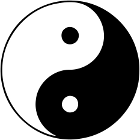UNARMED COMBAT
DOCUMENTARY, 52 MIN
According to a legend karate – the currently most widely practiced martial art in the world – originates from a Buddhist monastery in India. Along with wandering monks this ancient martial art reached China and Japan. The core principle of karate is “karate ni sente nashi” – there is no first attack in karate, which means that first there is defence and only then comes the attack. In order to help farmers and traders to protect their family and home against robbers and thieves the wandering monks taught them self-defence techniques. Development of defence techniques employed the most efficient moves of the body physiology. The attack techniques took advantage of the knowledge about the most unprotected and delicate parts of the adversary’s anatomy. The self-defence techniques were honed by using everyday tools – a rod, rice-planting sticks, threshing tools, etc. The modern karate as a martial art became well known only after World War II. Nearly every country had their “own Japanese” instructor who established the local karate school. “Thanks” to the “iron curtain” separating occupied Estonia from Western countries, no “Japanese of her own” ever came here. Nevertheless, with the help of our good northern neighbours – Finns and Swedes – some books and magazines about karate still reached us. Using the fragmentary literary and photo materials we had to develop our own understanding about the technique of this martial art, the dynamics of movement and the principles of the Oriental philosophy. We were self taught. Karate as a sport was banned in the Soviet Union. The state did not trust the people to learn karate skills as a weapon. Karate peaked in Estonia between 1979 and 1984, i.e. between one banning period and another. By that time Estonia had become the leading karate centre in the USSR. The first USSR Karate Championship was held in Tallinn in 1979. During this period a number of Estonians became the USSR champions in both kata as well as kumite. Jüri Veltsberg from Estonia was titled the first men’s heavyweight champion in the USSR. Karate as a hobby earned a cult status in the society. It is noteworthy that in the USSR only adults were allowed to practice karate as a competitive sport. Karate as a hobby has become a lifestyle.
The objective of the film is to present karate as one of the most efficient upbringing method to promote development of an individual – fearless, of sound judgment in difficult situation, and loyal to one’s people. During the period of Estonia’s regaining independence in 1991, athletes who had mastered karate played the decisive part in defending agencies of national importance against armed attacks of the USSR regime. So-called karate hit squads participated in protecting the TV and radio station, the TV mast and other sites of national importance. Luckily, Estonia managed to regain her independence without loss of life, something that cannot be said about Latvia and Lithuania.
The film provides an overview of the various educating principles of the martial art. It includes visits to practice gyms – dojos. Comments from prominent karate instructors. Explanations are provided by the founder of the Estonian karate school Rein Siim. The film also discusses momentous sporting moments from 1979 to 1984, between one banning period and the next. To date Marko Luhamaa from Estonia is the only athlete in the Baltic region who has earned the most sought-after karate title – the men’s heavyweight champion of the world (2006). The audience is given an overview of tameshiwari – the arcane technique of breaking of objects. The textual part features Oriental aphorisms and Japanese haikus. The film attempts to respond to questions such as: what is karate, karate as an amateur sport, karate as an educational part in an individual’s development process, why are there so many overlapping aspects in the Nordic culture and the Japanese cultural mentality. The authors also seek for links between Buddhist sophisticated philosophy and simple wisdom of peasants. There are more shared features than one could think.
Will – this is the most important part of the defence force. Without the will to defend even the best armed and trained soldier can be easily overpowered by the enemy. The viewers are shown the training process aimed at developing willpower at schools of general education, armed forces and other law enforcement structures. Positive emphasis is placed on patriotic emotions, regardless of nationality and religious beliefs. If a nation does not have the will to defend their home, there is no state or nation.
The overall atmosphere of the film is educating and optimistic. It makes viewers look into themselves and ponder about the core values of life: preserve life, carry on life and protect life. It promotes patriotic education of youth. Monitoring the tragic events in the present day Eastern Ukraine the concepts such as independence and freedom have acquired a real meaning. With certain allowances one could say that “Unarmed Combat” is a propaganda film aimed at improving the nation’s defence capacity and will of defence.
The film will be made in cooperation between the Republic of Estonian and the National Broadcasting Company.
Author and producer, Margus Soom


